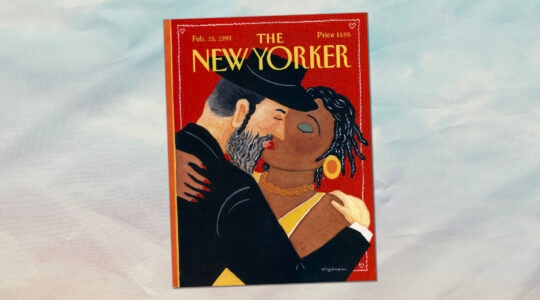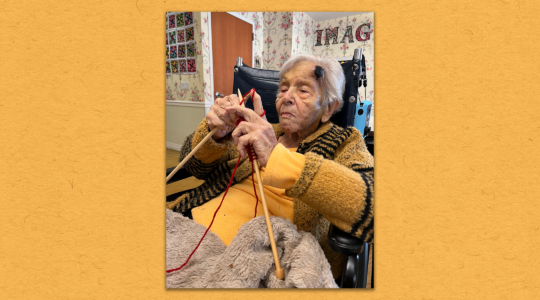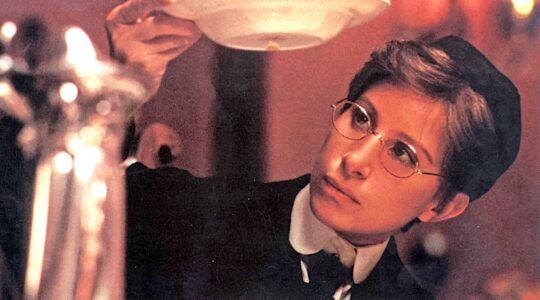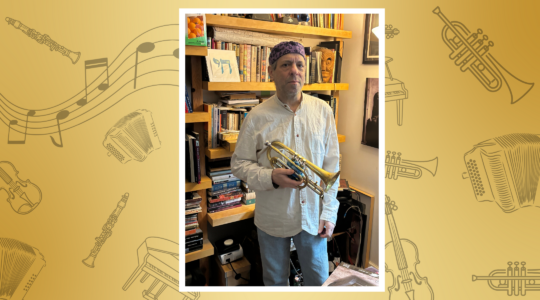This is Part Two of a two part series on the changing face of the Jewish community. Read part one here.
When April Baskin became the Reform movement’s first ever vice president of “audacious hospitality,” she took a radical approach: Instead of trying to entice unaffiliated post-college Jews back into the fold, she focused on how Jews on the margins could help reinvigorate Judaism from the outside in.
Baskin, whose parents are both Jewish—her mother Ashkenazi and her father black and Native American—sees the question of engaging the next generation from several perspectives. The daughter of a Hebrew school teacher, she grew up in the center of her Northern California synagogue’s communal life. But, like so many Jews of color, she has often found herself having to prove her Jewish authenticity. She’s seen Jews of many nontraditional communities—interfaith, LGBT and Jews of color, to name just a few—seek leadership roles in Ashkenazi-dominated synagogues and also seen groups build vibrant communities of their own.
Through the narratives of the three Jews of color profiled in part one of this series, which we published last week, as well as the three we profile here, we see examples of Jews who want to engage. Young Jews who keep trying despite the sometimes well-intentioned-but-demoralizing questions, unintentional slights and experience of being exoticized because one doesn’t have the traditional Ashkenazi look.
Among Jews of color, Baskin said in a Jewish Week “36 Under 36” profile in May, she sees “a lot of excitement and desire to express their Judaism in the fullness of who they are.”
And as these young Jews forge a new image of Judaism, one that in the words of Genevieve Goldstone is a “hyper-diverse American Jewish culture,” they are bringing a welcome new energy to American Judaism, one that the rest of us should celebrate and could well emulate.
“We need to focus on where the energy is,” Baskin said, “to focus on the group that is interested in engaging.”
~
Genevieve Goldstone – Barriers To Entry
As a spirituality-seeking freshman at the University of California, Berkeley in the early 1990s, Genevieve Goldstone walked up to the Hillel on campus and took contact information from just about “every flier on the wall.”
“I was hungry for ways to add meaning to life,” said Goldstone, 40, today the mother of two living in San Diego.
But though she began learning about Judaism when she started college, becoming active at Hillel and eventually deciding to observe Shabbat and keep kosher, it wasn’t until her early 30s that she decided to complete a Conservative conversion. The daughter of a Portuguese mother and Japanese father who grew up “nominally Catholic,” she faced several negative experiences early on in the process that nearly turned her off to Judaism altogether.
“I was viewed with suspicion rather than welcoming,” said Goldstone, who began her conversion process in the Orthodox world. She described her first visit to the Orthodox rabbinical council of Los Angeles when she was 32. She was handed a 10-page questionnaire intended to evaluate her mental health and full of probing questions about her family and personal life.
“When I went in for my first interview, I felt so violated in a way, so demoralized,” she recalled. “I already considered myself part of the community, and they looked at me like a crazy person who is going to infect the population.”
In her 30s, Goldstone decided to revisit the conversion process through the Conservative community, where she found more openness.
Still, as a Jew of color, she has grown to anticipate judgment and questioning, even in more welcoming circles.
“People make comments to gauge if I’m Jewish or not, like, ‘What’s your maiden name?’ and, ‘What’s your mom’s name?’” she said. “The feeling of internally being on guard doesn’t go away for a long time.”
Using her own life as a point of departure, Goldstone, a doctoral student in sociocultural and psychological anthropology at UC, San Diego, probes the diverse experiences of Jews of color from an academic perspective. Her dissertation focuses on the increasing racial and ethnic diversity within the American Jewish community, with an emphasis on Asian, Latino and African-American converts.
“Today, the majority of Jews of color are coming to Judaism through their partners,” she said. “It’s a part of their loved one’s identity that they enjoy and that they want to share.”
In her own home, though Goldstone is married to an Ashkenazi-Israeli man, she is the “keeper of Jewish practice.” “We go to shul, keep kosher, and have primarily Jewish friends,” she said. “That’s what I want.”
Despite frequently feeling “othered” in Jewish spaces, her research leaves her feeling optimistic about the future of the American Jewish community. “I believe what is being formed is a new, hyper-diverse American Jewish culture,” she said. “In one synagogue, you’ll have Koreans, Columbians, African Americans — all in one shared space.”




